Buying Live Lobster & NOT Get Ripped Off
Few delicacies rival lobster’s rich, sweet flavor. This prized crustacean is often associated with special occasions and fine dining, making it a sought-after ingredient for home cooks and seafood enthusiasts.
However, buying lobster can be intimidating, especially for those unfamiliar with the various types, preparation methods, and freshness indicators. Selecting the best lobster can elevate your culinary experience, whether planning a lavish feast or a simple yet elegant meal.
This guide explores the essential factors to consider when purchasing lobster, including different species, size options, and sourcing tips. I’ll also discuss determining freshness and quality, ensuring you bring home the best catch possible.
Whether you’re seeking live lobster, frozen lobster tails, or prepared dishes, knowing what to look for can make all the difference in your cooking. So, let’s dive into the world of lobster, uncovering the secrets to selecting the perfect specimen and preparing it to perfection so you can savor every delectable bite! With the proper knowledge, you’ll be ready to impress your guests or indulge in a luxurious dinner at home.
Cold Water Lobsters Versus Warm Water Lobsters
Cold Water Lobsters
Species: Primarily the American lobster (Homarus americanus) found in the North Atlantic and the European lobster (Homarus gammarus).
Flavor and Texture: Cold water lobsters are known for their sweet, rich flavor and firm, tender meat. Their meat is generally considered superior and more desirable.
Market Availability: These lobsters are often sold live or frozen and frequently featured in fine dining establishments.
Sustainability: Cold water lobster fisheries are often well-regulated to ensure sustainable practices, which can make them a more environmentally friendly choice.
Warm Water Lobsters
Species: Includes the Florida spiny lobster (Panulirus argus) and various other tropical species.
Flavor and Texture: Warm water lobsters have a milder flavor and a softer texture. They lack the sweet taste of cold water lobsters and may have more fibrous meat.
Market Availability: More common in tropical regions, they can be found in seafood markets but may not be as widely recognized in fine dining as cold water lobsters.
Sustainability: The sustainability of warm water lobster fisheries can vary significantly depending on local regulations and practices.
My Conclusions
If you’re looking for the best flavor and texture, cold water lobsters are generally the preferred choice for cooking and dining. They offer a richer taste and firmer meat compared to warm water lobsters, making them a popular option for special occasions and gourmet meals. Warm-water lobsters can still be enjoyable, but they typically don’t match the culinary experience provided by cold-water varieties.
Where Do You Find Cold Water Lobsters?
The most obvious answer is Maine, but let’s remember Maine’s southern neighbor, New Hampshire, which also catches lobsters out of the same waters as Maine. Did you know Maine accounts for almost half of the nation’s lobster catch?
Southern Australia, New Zealand, and South Africa are other parts of the world where you’ll find cold-water lobsters. Warm water rock lobsters come from Florida, the Caribbean, and Latin America. You will likely find them live if you are in the area.
All Lobsters Are Not Created Equally
Knowing where the lobsters you purchase come from is crucial for several reasons, particularly regarding the cleanliness and quality of the water in which they are harvested. Here’s why this knowledge is essential:
Water Quality and Lobster Health
The cleanliness of the water directly affects the health and quality of the lobsters. Lobsters that inhabit clean, unpolluted waters are less likely to carry diseases or harmful substances. Contaminated water can lead to unhealthy lobsters that may contain pollutants or toxins, making them unsafe for consumption.
Flavor and Texture
Lobsters from clean waters typically have a superior flavor and texture. Pollutants and poor water conditions can affect the lobster’s growth and development, producing inferior meat quality. A lobster’s diet, which consists of the marine ecosystem around it, also plays a significant role in its taste. Cleaner waters lead to healthier, tastier lobsters.
Sustainability Practices
Knowing the source of your lobsters often provides insight into the fishing practices used. Reputable fisheries that harvest lobsters from clean waters are more likely to follow sustainable practices. This means they prioritize the health of marine ecosystems and adhere to regulations that protect lobster populations and their habitats.
Food Safety
Understanding the origin of lobsters can also provide peace of mind regarding food safety. Reputable suppliers typically have stringent quality control measures and traceability systems to ensure the lobsters they sell are safe to eat. This is particularly important as lobsters can be susceptible to contaminants and bacterial growth if not handled and stored correctly.
Being informed about the origin of the lobsters you purchase is essential for ensuring both quality and safety. By prioritizing lobsters from clean, sustainable sources, you support responsible fishing practices and contribute to healthier oceans while enjoying the best flavors and textures that lobsters offer. Whether you’re preparing a special meal or simply indulging in a seafood treat, knowing where your lobster comes from makes a significant difference in your culinary experience.
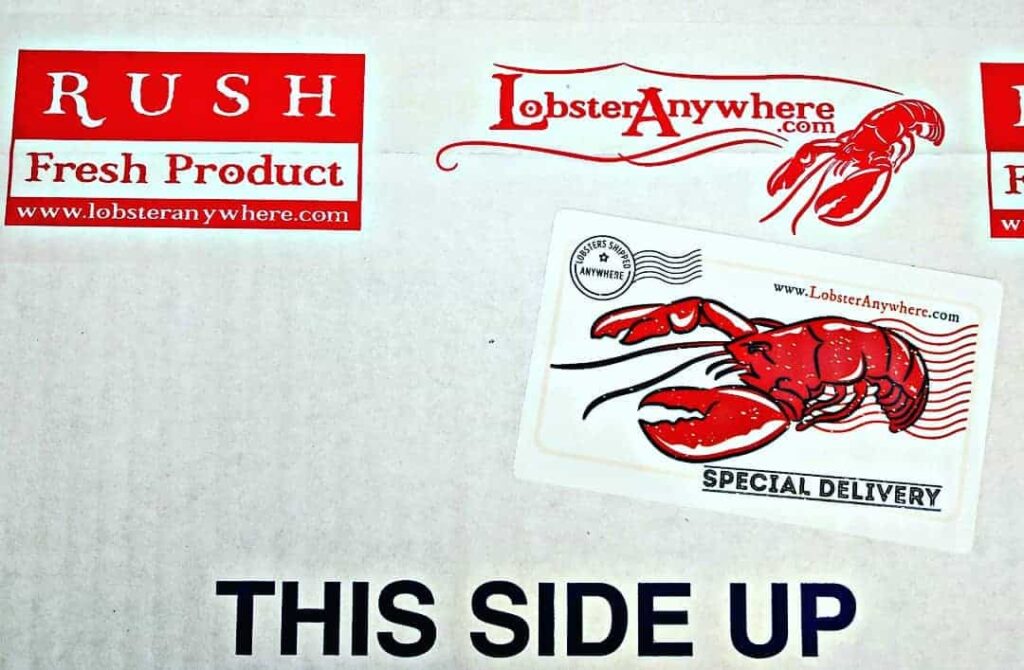
Know How Your Lobsters Will Be Shipped
The method of shipping fresh lobsters is critical for several reasons, and some shipping companies indeed have better practices than others. Here’s why the shipping process matters:
1. Freshness and Quality
The primary concern with shipping fresh lobsters is maintaining their quality and freshness. Lobsters are highly perishable, and the time spent in transit can affect their taste, texture, and overall quality.
Companies that use expedited shipping methods, such as overnight or two-day shipping, are more likely to deliver fresher lobsters, while those that rely on slower methods may result in compromised quality.
2. Temperature Control
Lobsters must be kept in a controlled environment to remain alive and healthy during transport. Some shipping companies use insulated packaging and temperature-controlled shipping methods to maintain the proper conditions. Choosing a company that prioritizes temperature control is essential for ensuring your lobsters arrive in peak condition.
3. Handling Practices
The way lobsters are handled during shipping can significantly influence their quality. Reputable shipping companies have trained personnel who follow best practices for packing and handling seafood. This includes using proper materials that prevent damage and minimize stress to the lobsters, which can impact their flavor and texture once cooked.
4. Reputation and Reviews
Some shipping companies have established reputations for quality service and product delivery. Researching customer reviews and ratings can help you identify companies known for their reliability, timely delivery, and overall customer satisfaction. A company with a strong track record will likely care more about shipping and handling your lobsters.
5. Return and Guarantee Policies
The best shipping companies often guarantee their products, ensuring that they will offer a replacement or refund if the lobsters arrive dead or in poor condition. Understanding a company’s policies regarding returns and guarantees can give you peace of mind when purchasing.
How your fresh lobsters are shipped is crucial for ensuring their freshness, quality, and overall experience. Opting for a reputable shipping company that prioritizes temperature control, careful handling, and customer satisfaction will help ensure that your lobsters arrive in excellent condition. Researching and selecting the correct shipping option can significantly enhance your culinary experience and help you enjoy the rich flavors of fresh lobster.
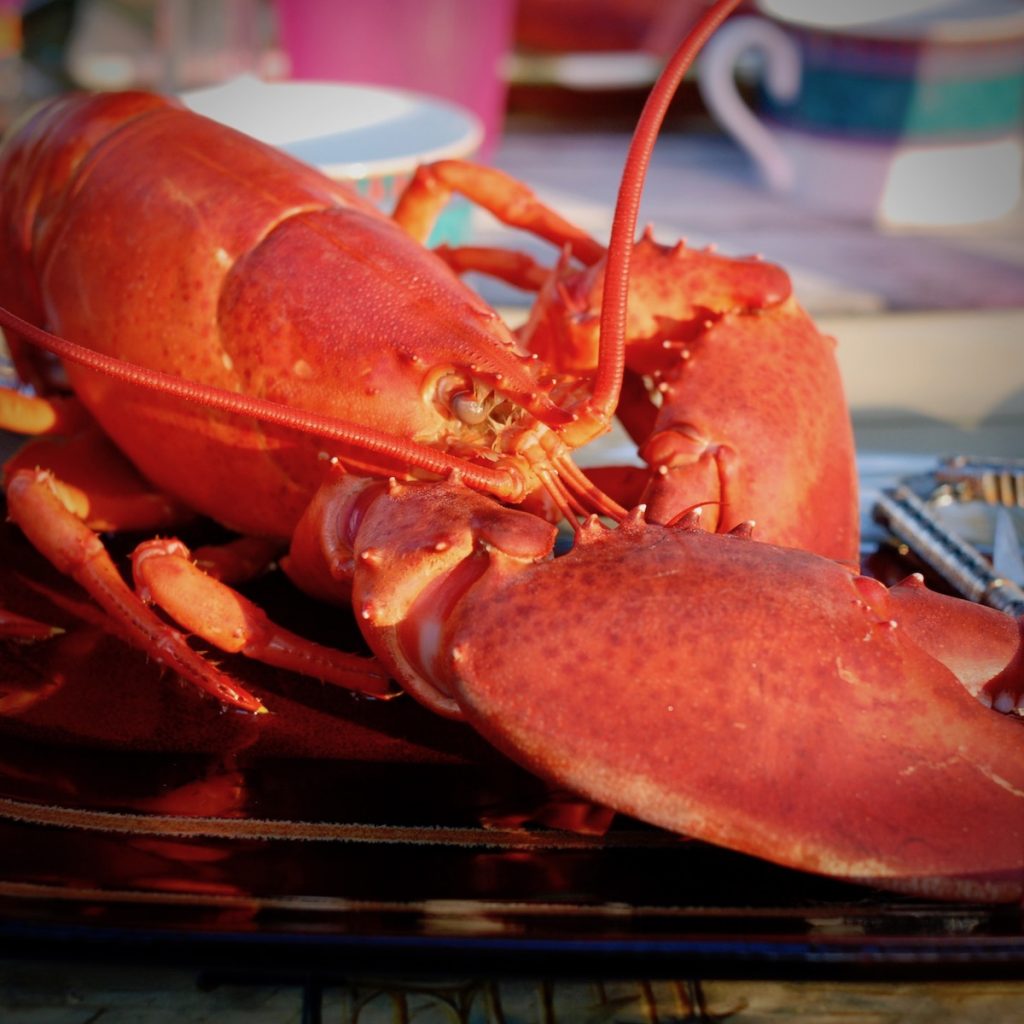
What Can Affect the Price When Buying Lobster?
The price of lobster can fluctuate due to several factors, each impacting the overall cost you’ll encounter when purchasing. Here are some of the critical factors that can affect lobster prices:
Supply and Demand
Seasonality: Lobster prices tend to vary with the seasons. During peak harvesting seasons, when supply is high, prices may drop. Conversely, prices can rise in the off-season when lobsters are less abundant.
Market Demand: Increased demand for lobster, especially during holidays or special occasions, can drive up prices. Suppliers may raise prices if many people are looking to buy lobster for events like Christmas or New Year’s Eve.
Lobster Type
Species: Different species of lobster (e.g., cold water vs. warm water) have varying price points. Cold water lobsters, like the American lobster, are often more expensive due to their superior quality and flavor.
Size and Weight: The price of lobster is also influenced by size. Larger lobsters typically command higher prices due to the increased meat yield. Lobsters are often sold by the pound, so heavier lobsters will cost more.
Sourcing and Location
Fishing Regulations: Areas with strict fishing regulations may have limited harvesting seasons or quotas, impacting availability and pricing. Sustainable practices can lead to higher costs as fisheries work to protect lobster populations.
Geographic Location: Prices may vary depending on where you are purchasing lobsters. Coastal regions with direct access to lobster fishing may have lower prices than inland areas where transportation costs add to the final price.
Shipping and Handling
Transportation Costs: Shipping costs can significantly affect the final price if you buy lobster online. Companies that offer expedited shipping to maintain freshness may charge more.
Packaging: Proper packaging materials and methods for shipping fresh lobsters can also influence costs. Companies prioritizing quality and freshness may charge higher prices due to better handling practices.
Market Conditions
Economic Factors: Economic changes, such as inflation or fluctuations in fuel prices, can impact shipping and operational costs, leading to price adjustments.
Competition: Multiple suppliers in a region can drive prices down. Conversely, if there are fewer suppliers, prices may increase due to limited competition.
Conclusions
Understanding the various factors affecting pricing is essential for making informed decisions when purchasing lobster. By considering elements like supply and demand, species, sourcing, shipping costs, and market conditions, you can better navigate the lobster market and find the best value for your culinary needs. Whether planning a special meal or a casual dinner, being aware of these factors will help you enjoy a delicious lobster experience without overspending.
What If One of Your Live Lobsters Dies?
It doesn’t happen often, but it does happen, so be sure to check the company’s return policy before you place your order. Make sure you can get all your money back.
Not just the cost of the lobster but the cost of shipping. Call and ask before ordering if the return policy needs to be posted on their website.
Customer Service
You want to work with a lobster company that offers excellent customer service. However, these are perishable food items, and you may need many questions answered.
- What if your lobsters arrive, and you find a dead one?
- How come the lobster isn’t moving?
- How should I cook the lobsters?
- Does it hurt them?
You want to work with a reputable company that will be there to answer your questions.
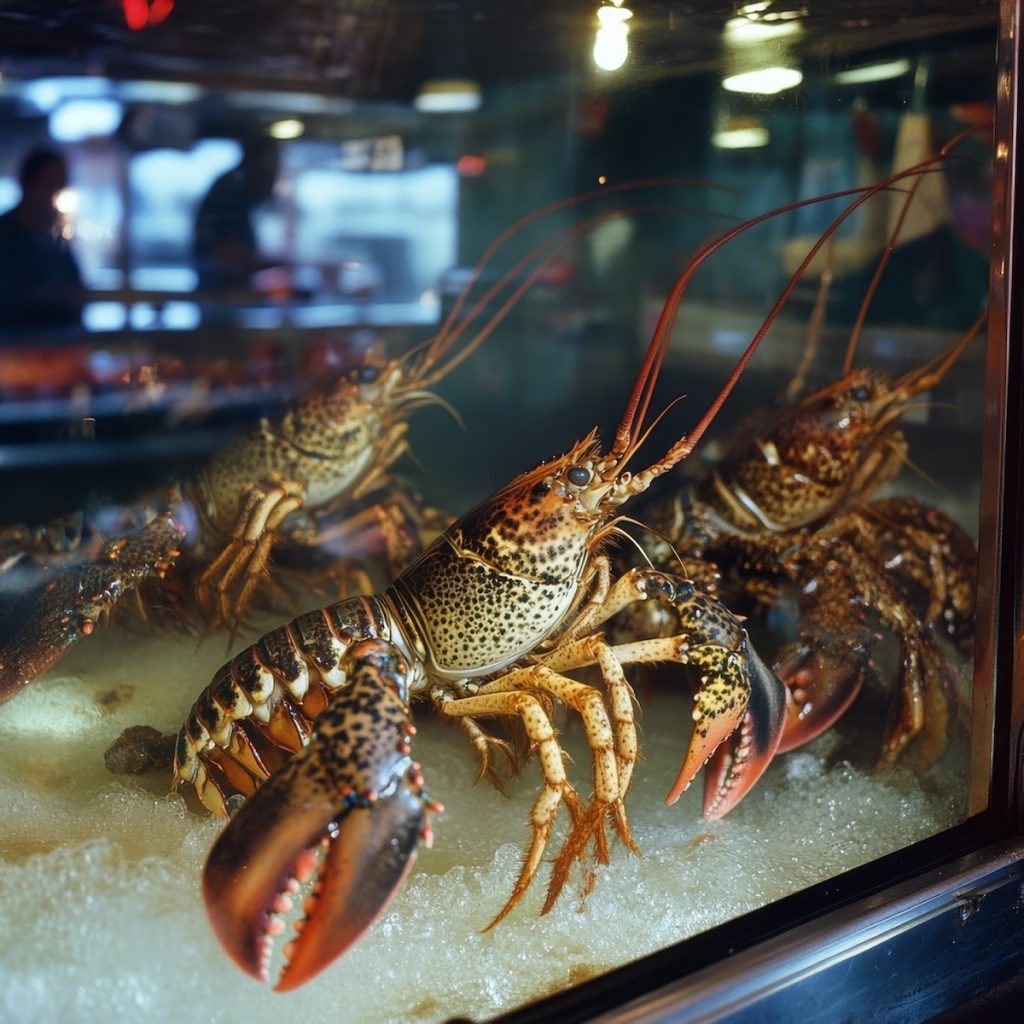
Shipping or Lobsters – What Are You Really Paying For?
When purchasing lobster online, understanding the costs associated with shipping versus the lobster itself is crucial for several reasons:
Total Cost Awareness
Some online seafood vendors may offer lower lobster prices but high shipping fees, which can make the total cost comparable to or even higher than that of other suppliers. Evaluating both the lobster price and shipping fees enables you to assess the overall value of your order and choose the best option.
Value for Money
Lorem ipsum dolor sit amet, consectetur adipiscing elit. Ut elit tellus, luctus nec ullamcorper mattis, pulvinar dapibus leo.
Quality and Freshness
Shipping costs can impact the quality and freshness of the lobster. If a supplier has low prices for the lobster but high shipping fees, it may indicate their sourcing or handling practices. Reputable vendors often prioritize quality, which can sometimes mean higher shipping costs for faster delivery. Understanding this can help you choose a vendor that provides fresh, high-quality products.
Comparison Shopping
When you’re aware of the shipping costs, you can better compare different suppliers and their offerings. Some vendors may include shipping in the price of the lobster, while others may list it separately. Knowing how each vendor structures pricing helps you make fair comparisons to find the best deal.
If Lobsters Live in Water, How Can They Stay Alive In a Refrigerator For a Day or Two?
Lobsters can remain alive for several days after being removed from the ocean due to several physiological adaptations and proper handling practices. Here’s how this is possible:
1. Physiological Adaptations
- Respiratory System: Lobsters breathe through gills, which can extract oxygen from water. Even out of the ocean, they can survive for some time if kept moist and in a suitable environment.
- Low Metabolism: Lobsters have a relatively low metabolic rate, which allows them to conserve energy and survive without food for extended periods. This slow metabolism also helps them endure periods of limited oxygen and stress.
2. Proper Handling and Storage
- Moist Environment: When lobsters are harvested, they are typically kept in a moist environment (such as damp seaweed or wet newspaper) to prevent them from drying out. Keeping them moist helps maintain their gill function and overall vitality.
- Temperature Control: Keeping lobsters in a cool environment further slows their metabolism, extending their survival time. Lobsters are often stored in refrigerated conditions during transport, which helps preserve their liveliness.
3. Packaging Techniques
- Insulated Packaging: Lobsters are often shipped in insulated containers with ice packs or gel packs to maintain cool temperatures and humidity levels. This packaging helps to prevent stress and keeps the lobsters alive during transit.
- Airflow: Some packaging methods allow for airflow, which can help lobsters breathe and stay alive longer by preventing suffocation.
4. Short Transport Times
- Freshness and Timing: Lobsters are often transported shortly after being harvested. The faster they are transported, the better their chances of arriving alive and in good condition. Many suppliers prioritize quick shipping to ensure that lobsters reach their destination fresh.
With the proper handling and storage methods, lobsters can remain alive for two or three days after being removed from the ocean. Their physiological adaptations, combined with proper packaging and environmental conditions, enable them to survive this period, allowing consumers to enjoy fresh lobster with minimal loss of quality.
Understanding these factors is essential for anyone purchasing live lobsters, ensuring they receive a fresh and safe product.
What if I Can’t Eat the Lobster Right Away?
If you receive lobsters and can’t eat them right away, storing them properly is essential to ensure they remain alive and fresh until you’re ready to cook them. Here are some tips for handling lobsters when you can’t prepare them immediately:
Keep Them Cool
Refrigerate: Place the lobsters in the refrigerator as soon as possible. The ideal temperature for storing live lobsters is around 32°F to 40°F (0°C to 4°C). This helps slow down their metabolism and prolong their survival.
Avoid Freezing: Never freeze live lobsters, as this will kill them. Instead, keep them in a cool, moist environment.
Moisture Maintenance
Use Damp Towels: To maintain humidity, keep the lobsters in a container covered with damp towels or seaweed. This prevents them from drying out and helps them breathe through their gills.
Avoid Freshwater: Do not immerse the lobsters in freshwater, which can be harmful. Freshwater can disrupt their internal balance, leading to stress and death.
Storage Container
Ventilated Container: Place the lobsters in a breathable container, such as a cardboard box or a mesh bag. This allows for airflow while preventing them from suffocating.
Avoid Plastic Bags: Do not store live lobsters in airtight plastic bags, as this can lead to a lack of oxygen and cause them to die.
Timing
Consume Quickly: For the best flavor and quality, aim to cook and eat the lobsters within 24 to 48 hours of receiving them. If you can’t cook them within this timeframe, consider freezing them after cooking (but not alive).
Freezing Cooked Lobster
Cook First: If you need to store them for an extended period, consider cooking the lobsters first. Once cooked, you can freeze the meat in an airtight container or freezer bag for up to three months.
Chill Before Freezing: Allow cooked lobsters to cool completely before freezing to maintain quality.
Bigger or Smaller When Buying Lobster – Which is Best?
The choice between large lobsters and smaller lobsters often depends on personal preference, as both sizes have their unique qualities and advantages. Here are some factors to consider when determining which might be better for eating:
Large Lobsters
Pros:
- More Meat: Larger lobsters typically yield more meat, which can be a significant advantage for those looking to get the most out of their purchase.
- Rich Flavor: Many people believe that larger lobsters have a richer and more robust flavor due to their age and size.
- Impressive Presentation: Larger lobsters can be visually appealing, making them an excellent choice for special occasions or presentations.
Cons:
- Texture: The meat from larger lobsters can sometimes be less tender than that from smaller lobsters, as larger lobsters may be older and have tougher meat.
- Cost: Larger lobsters often come at a higher price point, which can be a consideration for budget-conscious buyers.
Smaller Lobsters
Pros:
- Tender Meat: Smaller lobsters, particularly those in the 1- to 2-pound range, tend to have more tender meat, which many find more enjoyable to eat.
- Flavor Profile: Smaller lobsters are often perceived to have a sweeter flavor, making them a favorite for many seafood lovers.
- Cost-Effective: Smaller lobsters are generally more affordable, making them a great option for casual meals or larger gatherings where multiple lobsters are needed.
Cons:
- Less Meat: Smaller lobsters yield less meat, which may not be ideal for those seeking a substantial meal.
- Time-Consuming: Cooking and cracking open smaller lobsters can be more time-consuming, especially if serving multiple guests.
Ultimately, the choice between large and small lobsters comes down to personal preference and the context in which they will be served. If you prioritize tenderness and sweetness, smaller lobsters may be the better option. However, if you’re looking for a visually impressive dish with plenty of meat, larger lobsters could be the way to go. Regardless of size, both can provide a delicious lobster experience when cooked and prepared correctly.
How to Buy Lobster Tails
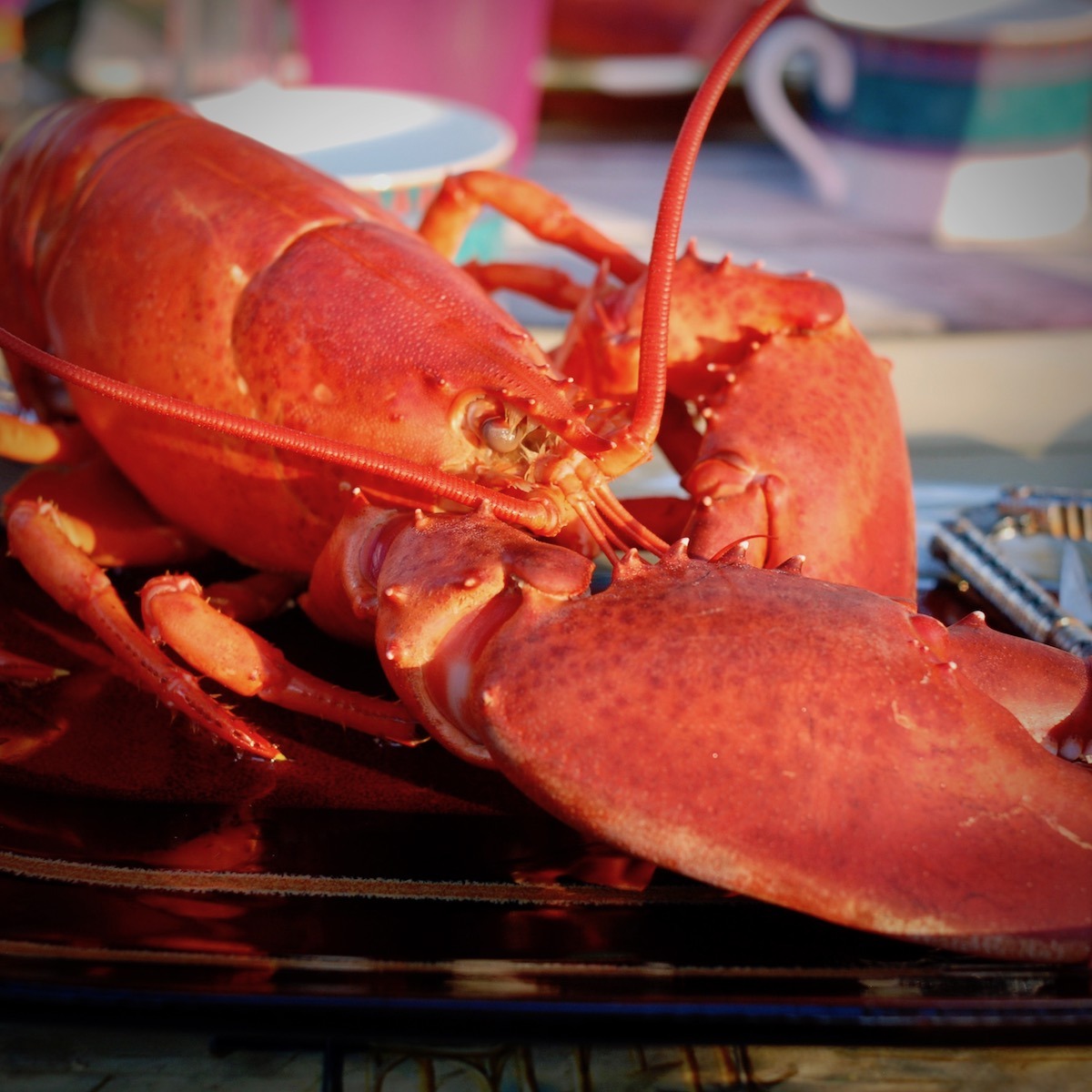

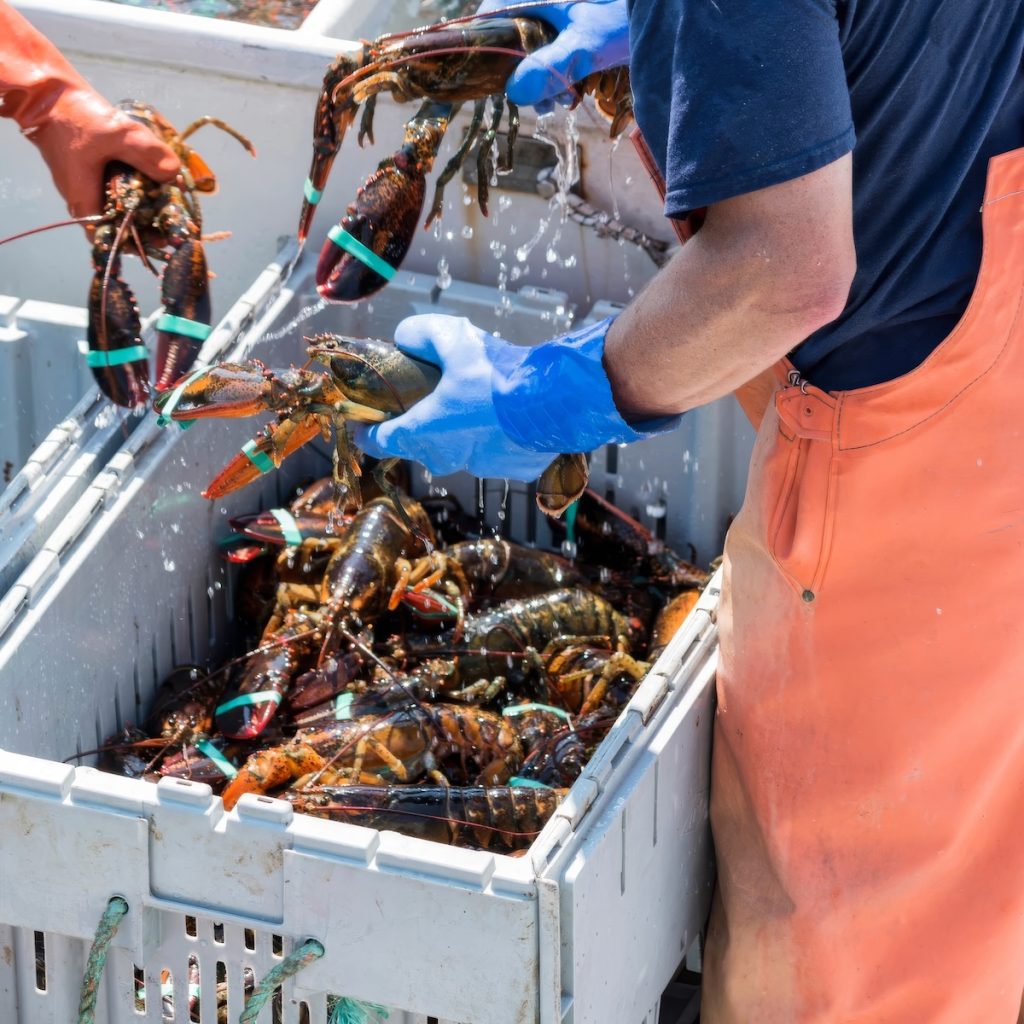

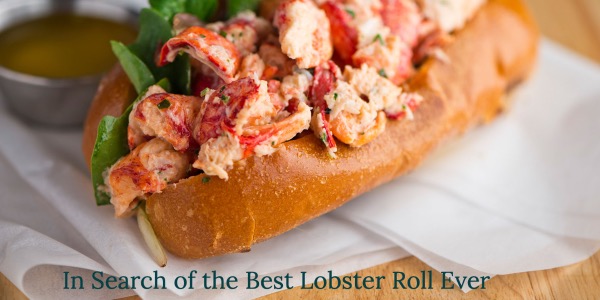



21 Responses
thanks for the info. I won’t buy lobsters on line but Liked the info anyway Good to know the biggest is not the best also. I liked that you explained the two types
I am looking for a Lobster purveyor who can sell me the seaweed to cook the lobster in addition to the lobsters. Can you accommodate this?
You many want to try Maine Lobster Now or The Fresh Lobster Company.
No mention of Canada? I think we produce the odd one in our waters.
As of February 2025, Canada’s lobster industry continues to be a significant contributor to the country’s seafood exports, despite facing recent challenges.
Export Trends
In November 2024, Canada exported approximately C$28.1 million worth of prepared or preserved lobster, marking a 14.8% increase from November 2023. However, during the first half of 2024, total lobster exports experienced a 17% decline, amounting to 38,099 tonnes. This downturn was primarily due to a substantial 41.6% decrease in exports to China, which totaled 9,963 tonnes during that period.
Horrible customer service! I purchased a surf and turf dinner for the holidays to be delivered to my parents on December 20th. I received an email confirmation and my credit card was charged….however when I returned to the country on Jan. 5th, I found out my parents never received their gift.
I was shocked that nobody from Maine Lobster contacted me to tell me it hadn’t been delivered. I sent them an email along with the order confirmation to ask what happened and received no response. When I called today, they simply said “your credit card was refunded on the 10th.” No explanation, no apology. When I asked what happened, I was told that MN had experienced bad weather. When I asked why nobody bothered to let me know or respond to my email, she just said “I don’t know.” Terrible customer service experience, I definitely wouldn’t recommend them!
Hi Laurie, what company did you have problems with?
Just need to correct you, lobsters are are crustacians not shellfish,related to crabs/crawdads etc. They are not filter feeders but meat eaters. For great shellfish at reasonable prices try “chessie seafood and aquafarms” from Va. Briney oysters and sweet clams.Yum.
Keep on Cookin’
Dan, I’m not sure that is correct. Lobsters are considered shellfish. Shellfish is a broad category that includes both crustaceans (like lobsters, crabs, and shrimp) and mollusks (like clams, oysters, and mussels). Since lobsters are crustaceans, they fall under the shellfish classification.
Hello All
Eastern Fisheries is the largest scallop company and own largest scallop fishing fleet. We will start to sell fresh live lobsters and would love to assist any seafood companies that want to buy directly from the boat level. From the ocean floor to your door.
Thank You
Rob Rizzo
The important thing for lobsters is to make sure that they are fresh. People often drive to the docks to get fresh ones. Lobster does not freeze as well as some other seafood, and it loses flavor when its frozen.
Despite the claims of this article, New Englanders generally regard medium size (2 – 3 lbs) lobsters are generally regarded as the best quality. Seafood markets often charge less per lb. for smaller lobsters to get customers to purchase them.
Jaspar White recommends eating the tail first because it has the lowest quality and saving the claws for last because they have the best quality.
Steamed clams make a great first course before eating lobster so you might want to order steamers too.
I buy Maine lobster tails and claws from my fish market
Sometimes the meat from the tails can be mealy and if I steam or boil it almost dissolves
What is happening?
Not sure Michael, but it’s happened to me. I would guess that the lobsters you are purchasing are warm water lobsters meaning they come from locations like the Caribbean and not from cold water like Maine, New Hampshire, Canada. I would check with your market and make sure they are really from Maine but I would also speak with the fishmonger at your market, explain what is happening and see what they have to say. They should at least replace the mealy ones you purchased and if they don’t, try another market.
I assume the tails were previously frozen and thawed (“refreshed”). If the original freezing was not done properly, (i.e. too much product was being frozen at the same time so the freezing too place slowly), you could have a mushy product. Even more suspect would be if the product had thawed and was refrozen. That’s why it is important to buy your seafood or any product from a reputable supplier.
There are many great seafood suppliers along the New England shores. We’ve been to many. We’re 1.5 hours to the ocean but in prime season coastal traffic is horrific. We find it easier if we have the lobsters shipped to us even at this short distance. I will only order from Captain Vince Seafood dockside operation out of Gloucester, MA. One Memorial Day weekend I ordered about 20 lobsters in advance for a Saturday party. The shipping container made it to the shipper on time (either Fedex or UPS-don’t remember) but didn’t leave their facility timely enough for the expected delivery date. Captain Vince Seafood sent one of their staff to the shipper to pick the package up and drive it to my house on the Friday afternoon of the holiday weekend in what turned out to be a 7 hour round trip due to traffid gridlock. Now that’s service you wouldn’t get anywhere else and their lobsters are great!
Atlantic Canada i.e. New Brunswick, Prince Edward Island, Nova Scotia and Newfoundland land three times as many lobsters as are landed in New England, and incidentally, ship huge orders of same to wholesalers in New England and throughout the US. One note about Soft-Shell lobsters, they always contain considerably less meat than Hard-Shell lobsters. Anyone who purchases soft-shell lobsters is ill-informed at best. Cheers
Thanks Reluctant Gourmet for this helpful information about lobsters and how to buy them.
I live in New Hampshire. The going price for live 1 – 1 1/4 lb. lobsters in the local supermarkets has ranged from $4.99 – $6.99 a pound for several years now. Many will cook them for you at no cost. Plenty of seafood companies along the coast will ship live lobsters but you’ll pay a fortune. If you do order online, remember, anything over abut $6 a pound is packing and shipping and excessive profit.
I can’t stress enough importance on doing your research about the “New England” label. Make sure that they say that they’re from Maine or New Hampshire. I’ve definitely made that mistake!
What about the weight loss of Lobsters when ordering online? How much do they lose overnight? I ordered 2 – 6 lb lobsters and on arrival one weighed 4.6 lbs and the other 5.2 lbs. They were fresh and delicious but they were not 6 lb lobsters
Hi Rose, that’s an interesting question. Lobsters can lose 5% to 10% of their body weight during shipping, depending on factors like transit time, temperature, and handling conditions. The weight loss primarily comes from dehydration and stress.
Here’s a general breakdown:
Short shipments (24 hours or less): Weight loss is minimal, typically around 5%.
Longer shipments (48+ hours): Weight loss can reach 8-10%, especially if lobsters are exposed to warm temperatures or lack proper moisture.
Extended transit (3+ days): Lobsters may lose 10% or more, decreasing their survival rate.
To minimize weight loss, lobsters are often packed with damp seaweed or seawater-soaked materials to maintain moisture and reduce stress.